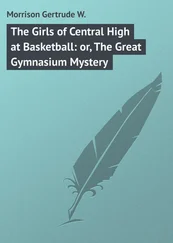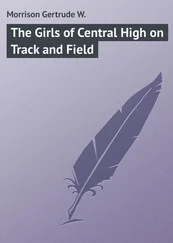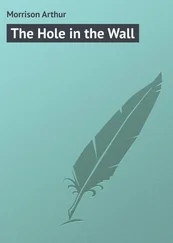“Brad, all of our figures are in metric units. Meters, not feet. Seventy meters. The wave is going to be over two hundred feet high.”
10:28 a.m .
54 Minutes to Wave Arrival Time
The prospect of a two-hundred-foot-high wall of water hitting a populated coastline was unmatched in recorded civilization. The biggest tsunami to hit any kind of populated area was the monster wave that resulted from the explosion of Krakatoa in 1883. The hundred-foot-high wave wiped out entire villages in the Sunda Strait of Indonesia, killing thirty-six thousand people. Now they were facing the possibility of a wave at least twice that big hitting one of the most densely populated coastlines in the world.
The phone rang, and Kai picked it up slowly, his mind reeling.
“Tanaka,” he said.
“Dr. Tanaka, this is Jeanette Leslie from CNN. I have some questions about the tsunami warning that was issued a few minutes ago.”
“I’m sorry, but I don’t have time to answer questions right now.”
“But, Dr. Tanaka, you—”
Before she could get any further, Kai hung up. Within moments, the phone rang again.
“It’s started,” Reggie said.
“The phone’s going to be ringing off the hook.” Without a receptionist to field the calls, just answering the phone would take up all of their time. Kai turned to Brad.
“I need your help again.”
“Answer the phones?”
“Yes. Reggie and I have too much to do.”
“But what do I say? I don’t know anything.”
“Actually, you know a lot. Maybe too much. I can’t have you giving out quotes to the media. Just tell them we will issue an official statement in”—Kai glanced at his watch—“ten minutes. Until then, no comment.”
Dealing with the media was a double-edged sword. Fielding their calls would take precious minutes away from calculating wave arrival times for the rest of the Pacific islands. On the other hand, giving the media statements could be a powerful tool for warning the public to get to high ground. But Kai couldn’t blindside HSCD. He needed to confer with them first. And it would definitely help to have some confirmation from NASA.
“What about the meteor impact?” Brad said. “Do you think we should mention that?”
“Look, Kai,” said Reggie, “I’m buying into your theory. We’ve got a big tsunami coming. But I think talking about a meteorite impact at this point is premature.”
“Right,” Brad said. “Why should we jump to conclusions? We have, oh, fifty-three minutes left. No reason to panic!”
“I didn’t say we shouldn’t issue another warning!”
“Calm down, you two,” Kai said quietly. “Reggie, send out an update that we have lost contact with Johnston Island and Christmas Island, and we believe a large tsunami may hit the coastline of Hawaii. We recommend that people get as far inland as possible.”
“Large tsunami?” Reggie said.
“Okay, massive tsunami.”
“I guess vertical evacuation is out.”
In most tsunamis, the downtown and Waikiki areas of Honolulu were so densely populated that evacuation by road, or “horizontal evacuation,” would cause huge traffic jams, essentially stopping all motion on the roads and inhibiting the movement of emergency vehicles and buses. For those who couldn’t evacuate away from the beach on foot or by vehicle, they normally recommended taking refuge above the third floor of a building at least six stories tall.
But in this case, the biggest wave was going to be at least the height of a twenty-story building. People following the standard instructions would be sentenced to death.
Kai nodded. “Recommend that people should get to high ground and that they may not be safe on high floors of buildings.”
“What about calling it a mega-tsunami?”
Mega-tsunami , a term used by the popular press, had no scientific definition, but the generally accepted understanding was that it was a tsunami over one hundred feet in height. Using the term would be a huge step. Warning about a tsunami was one thing. Warning about a megatsunami was unprecedented. The media would latch on to it like lampreys.
“Not until we get confirmation from NASA or the DART buoy. Just say that it’s a massive tsunami and that we’re not ready to estimate the height.”
“Gotcha. Helluva holiday, huh?”
Brad tapped him on the shoulder.
“Kai, I’ve got NESDIS on hold with Brian Renfro.”
“Good. Maybe they have something.”
“I also have Harry Dupree, George Huntley, and Mary Grayson holding. They called in as soon as they heard about the tsunami warning.”
“Where are they?” Kai was hoping George and Mary might be close enough to come in. Having two more scientists at the PTWC would be a big help.
“Harry’s in the Maui County Police Department. George and Mary are on the North Shore, at least an hour’s drive from here.”
“Okay,” Kai said. “They’re not going to do us any good here. Transfer the NASA call over here, and tell the others to wait.”
A few seconds later, the phone at the monitoring desk rang. As Kai picked up the phone, he motioned to Reggie.
“Reggie, once you’ve sent out the new warning, keep an eye on the DART data. Let me know the minute we start to get a reading.”
Reggie nodded and started typing at the terminal.
“Hello,” Kai said, getting back on the line. “Brian, you there?”
“I’m here, Kai. I’ve also got someone from NASA.”
“Hello. My name is Kai Tanaka, assistant director of the Pacific Tsunami Warning Center. Who’s this?”
A woman’s chipper voice responded. “This is Gail Wentworth, the duty scientist at NOAA’s Satellite Analysis Branch. Mr. Renfro said it was important. How can I help you?”
“It is important. The lives of almost every person in Hawaii may be at risk. I need to know if you have any photos or video taken over the central Pacific in the last hour. Specifically, at 1841 GMT.”
“Let me see. GOES-10 takes images every thirty minutes. I’ve got an image from 1830 GMT. There’s also the MTSAT from Japan.”
“No. You don’t understand. I need an image from 1841 GMT or after . We have reason to believe a meteorite struck that area this morning, and that a massive tsunami is headed toward Hawaii.”
Wentworth paused to take that in, then slowly said, “Why do you think a meteorite impact is the cause of it?”
“Several reasons I don’t have time to go into,” Kai said. “Do you have any images from the area of the Pacific with these coordinates?” He read Wentworth the longitude and latitude of the earthquake epicenter.
“The next GOES image is from 1900 GMT,” she said, “but even that may not help you. I don’t know if the resolution is great enough to see an impact like that. Besides, there’s a storm in that area of the Pacific. It may obscure an impact.”
Wentworth’s pace was agonizing for Kai.
“We have fifty-three minutes until the wave gets here,” Kai said impatiently. “Less to the Big Island. Are there any other options? What about the space shuttle?”
“Discovery is the only one in orbit. It’s docked with the space station. They’re over Egypt right now. As you know, the region you’re talking about is hundreds of miles from the nearest inhabited island. A higher-resolution polar-orbiting satellite may have been over that region this morning, but it’ll take me a little while to check and get any images we have to you.”
“Please let me know as soon as you have confirmation. Minutes count.”
“I’ll do my best.”
Kai thanked Wentworth and gave her the e-mail address where she could send the images. When Kai hung up, Reggie waved him over to his terminal.
Читать дальше












